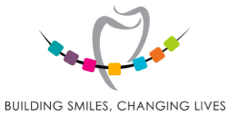At Lakewood and Claremont Orthodontics, we understand that an ideal bite is one where the teeth are well-aligned, with the upper teeth slightly overlapping the lower teeth in a smooth, U-shaped curve across the mouth. Yet, studies show that nearly 70% of people experience at least mild orthodontic issues, like crooked teeth or misaligned bites. So, why are imperfect bites more common than ideal ones?
While the exact cause remains uncertain, some experts suggest evolutionary factors. As our diets have evolved, shifting from more natural foods to processed ones, changes in facial structure have occurred, but our teeth haven’t always adapted to keep up. Genetics also play a significant role in orthodontic problems, alongside other factors such as poor oral habits or the early loss of baby teeth.
If you have what is often referred to as a “bad” bite, take comfort in knowing that today’s orthodontic treatments can correct virtually any bite issue more effectively, accurately, and comfortably than ever before.
At Lakewood and Claremont Orthodontics, we specialize in diagnosing and treating a variety of bite problems, including:

Crooked teeth
Crooked teeth often occur when the jaw is not wide enough to fit all of a person’s teeth comfortably. The teeth end up askew because large adult teeth are trying to fit into too small of a space.
Spaces between teeth
Diastema, the scientific name for when a smile has gaps, can occur when teeth are too small for the jaw. You can also see gaps when permanent teeth are missing and the other teeth can’t fill in the missing space. Other issues like thumb sucking or a low soft tissue attachment, can cause a diastema.
Excessive Overjet/Overbite
A bite in which the upper jaw noticeably protrudes beyond the lower jaw is referred to as an “overjet”. When the upper teeth overlap too much of the lower teeth, it’s called an “overbite”. A large overjet can cause speech impediments such as lisps and may cause difficulty when eating. Excessive overbites can lead to early wear on the front teeth.
Underbite
The opposite of an excessive overjet is an underbite, when the lower jaw protrudes beyond the upper jaw. It can cause teeth to wear unevenly and lead to uncoordinated growth of the upper and lower jaws. This is best evaluated early.
Crossbites
Crossbites are when the upper teeth on one side end up on the inside of the lower teeth when the jaw is closed. Crossbites are a more severe condition than either overbites or crowding. Crossbites can wear down teeth and lead to asymmetric growth of the lower jaw, which cannot be corrected easily once the patient has stopped growing. Crossbites are best treated early in childhood.
Open bites
If the jaw is closed and the back teeth touch but the front teeth do not, it’s called an “open bite”. An open bite is an aesthetic issue that can cause speech impediments, difficulty when eating and excessive stress on the jaw joints.



